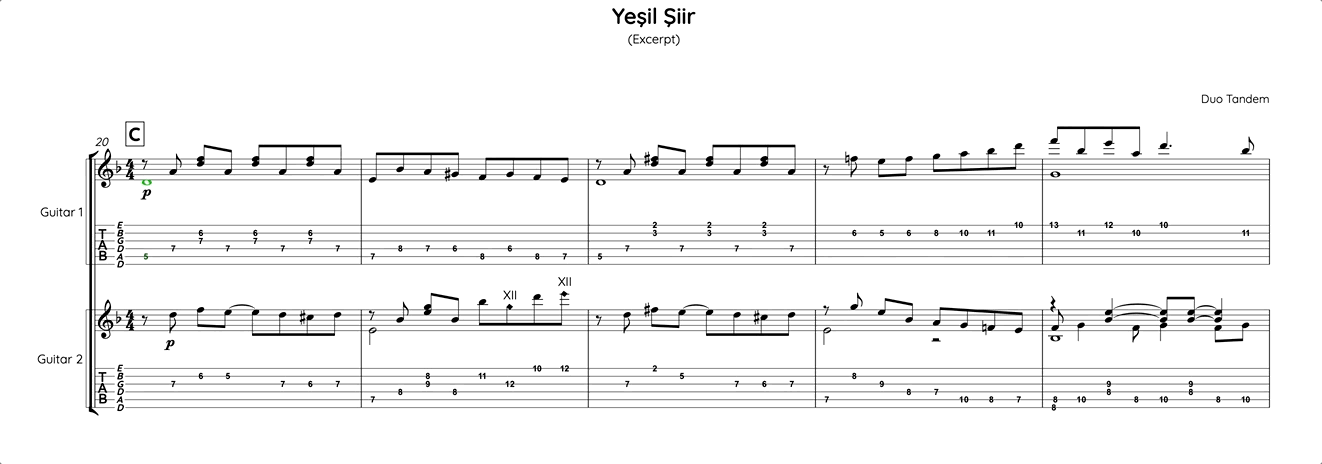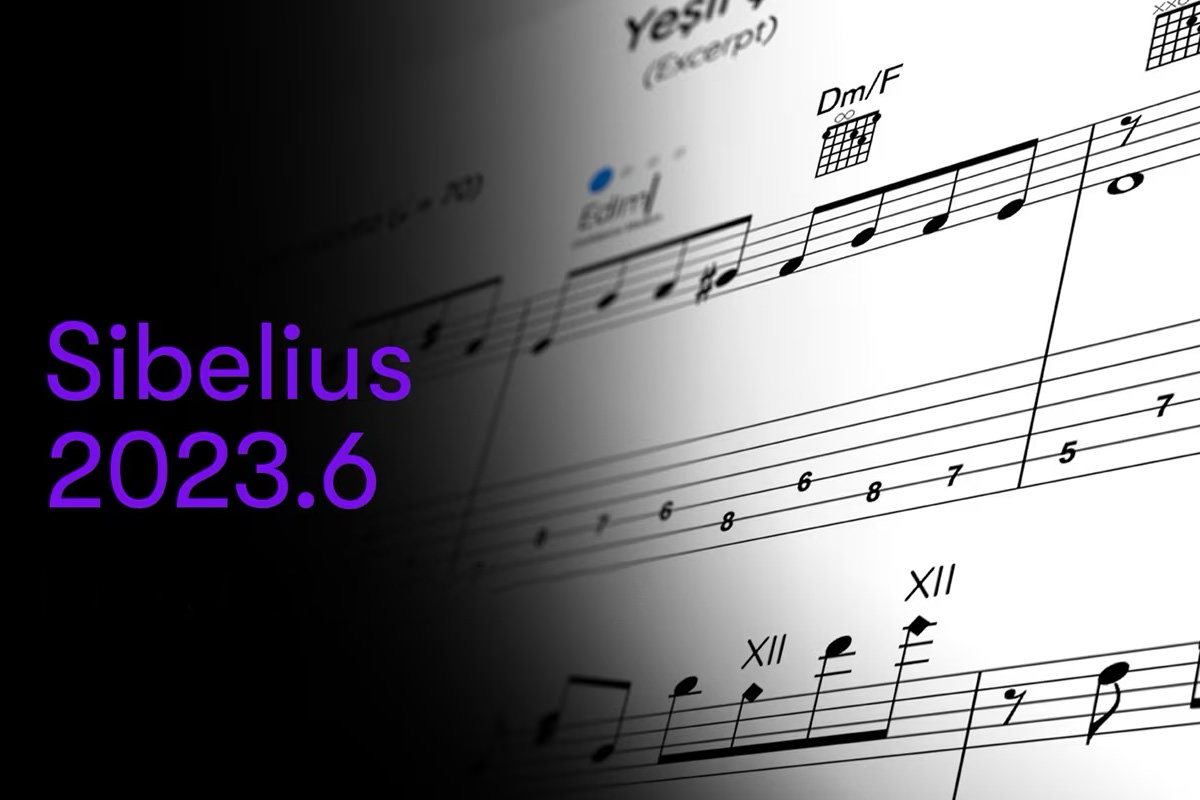Introduction of automatic chord completion in Sibelius
AVID is excited to announce the introduction of data-driven workflows in Sibelius based on artificial intelligence (AI). We're starting with a great feature that allows Sibelius to input chord symbols based on the music in your score. It's like having an interactive session with a harmony teacher at the touch of a button.
Like all Sibelius updates, this update is available to all users with a current subscription or software update + support plan for your perpetual license. Downloads are available in your My AVID account or through AVID Link.
NOTE: Currently, the following new features are only available in Sibelius Artist and Sibelius Ultimate on the desktop. While there is an update available in the iOS App Store, it only includes minor enhancements to Sibelius and does not include the new AI workflows.
Creator in the loop
AVID's AI model has been specially trained using annotations to public domain music from authorized academic sources. All the while, the user experience in Sibelius remains unchanged, so you have full control.
Entering chords in Sibelius has always been easy - just press Ctrl + K (Win) or Cmd + K (Mac) and type the chord name you want. Sibelius even shapes the changes and accidentals as needed. If you press the spacebar, you jump to the next note, and if you press Tab, you jump to the next measure.Now, when you enter chords into Sibelius, it will show you the best possible match to the music at that point in your score. And you can still use the same key combinations as before, so this feature fits perfectly into your existing muscle memory.
You're probably already familiar with AI-assisted autocompletion from your everyday life, such as receiving word recommendations when texting on your phone or seeing a possible completion to the sentence you're writing in an email. These workflows are often referred to as "human in the loop." However, the new workflow in Sibelius suggests not just the most common completion for the current context, but multiple plausible completions. This way you can stay in control and make all the artistic decisions. That's why we call it "creator in the loop."

Sibelius looks at all staves above and below where you type the chord symbol, and ignores unplucked drum staves, hidden notes, and note heads that are set not to play. In the illustration above, you can see that Sibelius displays circles above the suggested chord symbol, representing other possible chords returned by the model. If you press Ctrl + K (Win) or Cmd + K (Mac) when entering or editing chord symbols, you can cycle through them.
Below each new chord symbol, a quantitative reliability value is displayed (e.g. 78%) and we've included an option to display the underlying qualitative reliability (e.g. High, Medium, Low).
A look under the hood
So what does Sibelius actually do? When you enter a chord symbol in your score, the surrounding music is sent to the local AI model, which performs an analysis to determine the most likely harmony to be represented as the chord symbol. In cases where there is only one possible chord, the qualitative reliability of the model is such that it provides only one option. In cases where there are multiple possibilities, Sibelius offers a number of options to choose from, starting with the most likely one.
What's unique about AVID's AI model, and one of its most impressive features, is that it runs locally, meaning your music stays on your computer when it's analyzed. The model does not require internet access and does not collect any data. The AI model responsible for it has been specially trained based on several datasets of public domain music. These include music by Beethoven, Haydn, Bach and Mozart, as well as smaller datasets of music by Reger, Rimsky-Korsakov and Tchaikovsky. AVID has indicated the authors of all sources in the about box.
Because the model is limited to a specific set of corpora, a specific vocabulary of chords, and the annotations included in each of the datasets, the model does not yet know every chord. At the moment, Sibelius does not know anything beyond these limits, so don't expect it to know every chord. For this reason, AVID has added the reliability values shown above so you can learn more about the strengths and weaknesses of the underlying data model. As you can imagine, some musical contexts are ambiguous, and referring to the confidence values of the AI suggestions will help you better understand why the model does or does not suggest the expected chord. AVID of course plans to expand this feature in the future, so stay tuned!
Curious? You can download the latest version from your AVID account https://my.avid.com/products or trigger the download on your computer in AVID Link.
Do you have any questions about your licensing? Call or write us.




